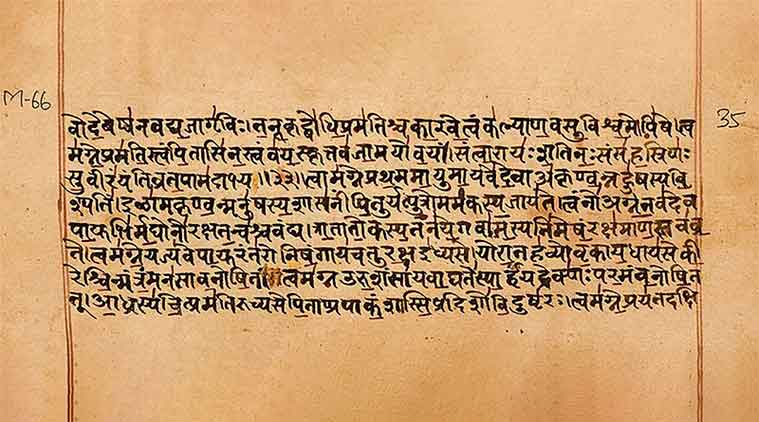
Introduction
The root of the term “Veda” is “Vid,” which means “to know” in Sanskrit. It is commonly interpreted as “the source or means of knowledge” or “the treasure of knowledge.” Apaurusheya Jnanam is the name given to the Vedas. Jnanam signifies knowledge, and Apaurusheya means not of human origin. It is knowledge that has been disclosed (Shruti). This is significant because it implies that the Vedas were not written by humans using logical and intellectual reasoning.
The Vedas were revealed to the Rishis (‘one who sees’) of ancient India after they had purified, disciplined, and singled out their minds by means of meditation.
There are four Vedas in total:
The Rig Veda The Yajur Veda The Sama Veda The Atharva Veda
Each Veda is broken into two distinct portions:
Kanda Karma (Action Section) Kanda Jnana (Knowledge Section)
Dharma, Karma, rituals, and other special actions aimed at achieving security (Artha) and pleasures are the subject of Karma Kanda (Kama). Because it deals with diverse human aspirations and the acts required to realize them, this is the longest part in each Veda. This section is called the Action Section because actions (Karma) are the method to achieve the desires.
Jnana Kanda, the second portion, is much shorter because it only addresses one human desire: the yearning for liberation (Moksha). Moksha can only be attained by knowledge, not through any action. As a result, this section is known as the Knowledge Section.
Karma Kanda - Action
Karma Kanda is the source of many rituals, prayers, and meditations that are necessary for achieving stability and pleasure in this life. It is also in this section that the Dharma rules are discussed. Every action (Karma) we take, according to the Vedas, has a subtle outcome. The term “subtle” refers to the fact that the outcome may not be immediately apparent.
Punya (merit), or what we call in everyday language “positive Karma,” is the result of following the Dharma’s laws. Punya would result in a good, pleasurable experience in the future.
Adharma, often known as “bad Karma” in common usage, is what happens when an action violates the Dharma’s rules. Papa is Adharma’s subtle outcome (demerit). In the future, Papa would cause an unpleasant or painful situation.
As a result, the do’s (Dharma) and don’ts (Adharma) listed in Karma Kanda are crucial for everyone seeking happiness and avoiding misery in life.
Punya’s rewards may also lead to heaven, however the Vedic view of heaven differs from that of other religions. In the Vedas, heaven is only a temporary residence.
As long as you have Punya to spend, you can stay in heaven. When your Punya is exhausted, you leave heaven. As a result, heavenly existence does not last forever.
If paradise is only temporary, then achieving it is not the same as liberation. Karma is the key to achieving heaven. As a result, there is no such thing as Karma-based liberation.
Jnana Kanda - Knoweldge
Both sections of the Vedas are sources of information regarding subjects for which there are no other sources. However, knowledge plays a different role in each section. The ultimate goal in the first portion is to obtain security and pleasure in this life. The ultimate goal in the second segment, on the other hand, is knowledge itself. This is a crucial factor to remember.
Vedanta is a specific name given to Jnana Kanda. “Vedanta” is a Sanskrit term that combines two Sanskrit words: “Veda” (Knowledge) and “Anta” (Belief) (End). Vedanta literally translates to “Knowledge’s End.”
Vedanta is the knowledge that brings a person’s quest for knowledge to a conclusion.